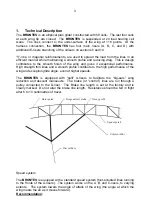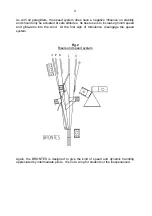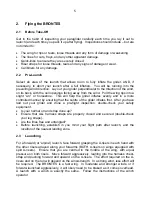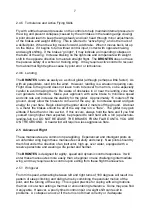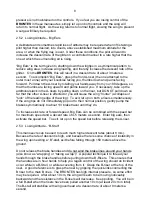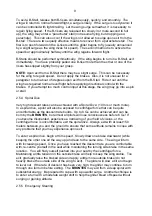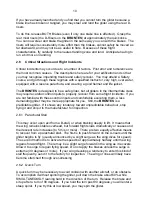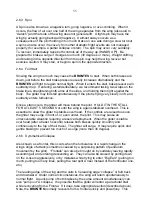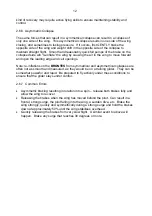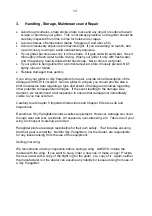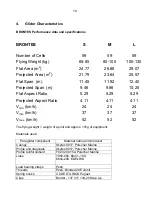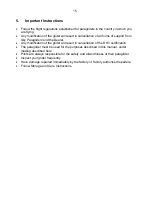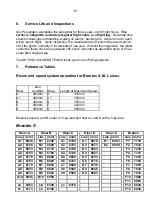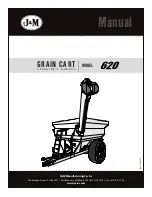
10
If you have already launched and you find that you cannot turn the glider because a
brake line has broken or tangled, you may steer and land the glider using the rear D-
risers.
To do this, release BOTH Brakes (even if only one brake line is affected). Grasp the
rear most risers (the D-Risers on the
BRONTES
) at approximately the quick links.
You can now steer and brake the glider in the same way you can with the brakes. The
risers will require considerably more effort than the brakes, cannot safely be moved as
far downward, and may not be as useful to flare. Because of these flight
characteristics, fly carefully to the nearest landing zone and land. Anticipate having to
run a bit more on landing.
2.6 Critical
Situations and Flight Incidents
Critical incidents may occur due to a number of factors. Pilot error and turbulence are
the most common causes. The descriptions here are for your edification and so that
you may recognise impending trouble and safely recover. You may attend a Safety
course, and go through these regimes with a qualified instructor, very high, over water,
equipped with a reserve parachute, and wearing a good helmet and life jacket.
The
BRONTES
is designed to be a safe glider, but all gliders in the intermediate class
may require careful control inputs to properly recover from some flight incidents. If you
are not familiar with these control inputs and comfortable executing them, a less
demanding glider may be more appropriate for you. Still, the
BRONTES
is a
predictable glider. If it shows any tendency toward unpredictable behaviour, stop
flying it and ship it to the manufacturer for inspection.
2.6.1 Parachutal Stall
This may occur upon exit from a B-stall, or when braking deeply in lift. It means that
the wing remains stable overhead, but forward flight slows dramatically or ceases and
the descent rate increases (to 5 m/s or more). There are two equally effective means
to recover from a parachutal stall. The first is to push forward on the A-risers until the
glider begins to fly (usually announced by a slight surge as the wing dives for speed).
The second method is to activate the speed bar approximately halfway until the wing
regains forward flight. There may be a slight surge forward in the wing as it recovers.
Allow it to surge to regain flying speed. Do not apply the brakes unless the surge is
extreme (30 degrees or more). If your wing develops a tendency to enter this kind of
stall frequently, send it to the factory for inspection. The wing or lines will likely have
become stretched through over-stressing.
2.6.2 Quick Turn
A quick turn may be necessary to avoid collision with another aircraft, or an obstacle.
To accomplish it without spinning the glider, pull down the brake about 60% while
SIMULTANEOUSLY leaning hard in the direction of the turn. Release the brake and
sit up after a turn of 90 degrees. If you hold the turn past 90 degrees, you will enter a
steep spiral. If you try this at low speed, you may spin the glider.
Содержание BRONTES
Страница 18: ...18 ...



